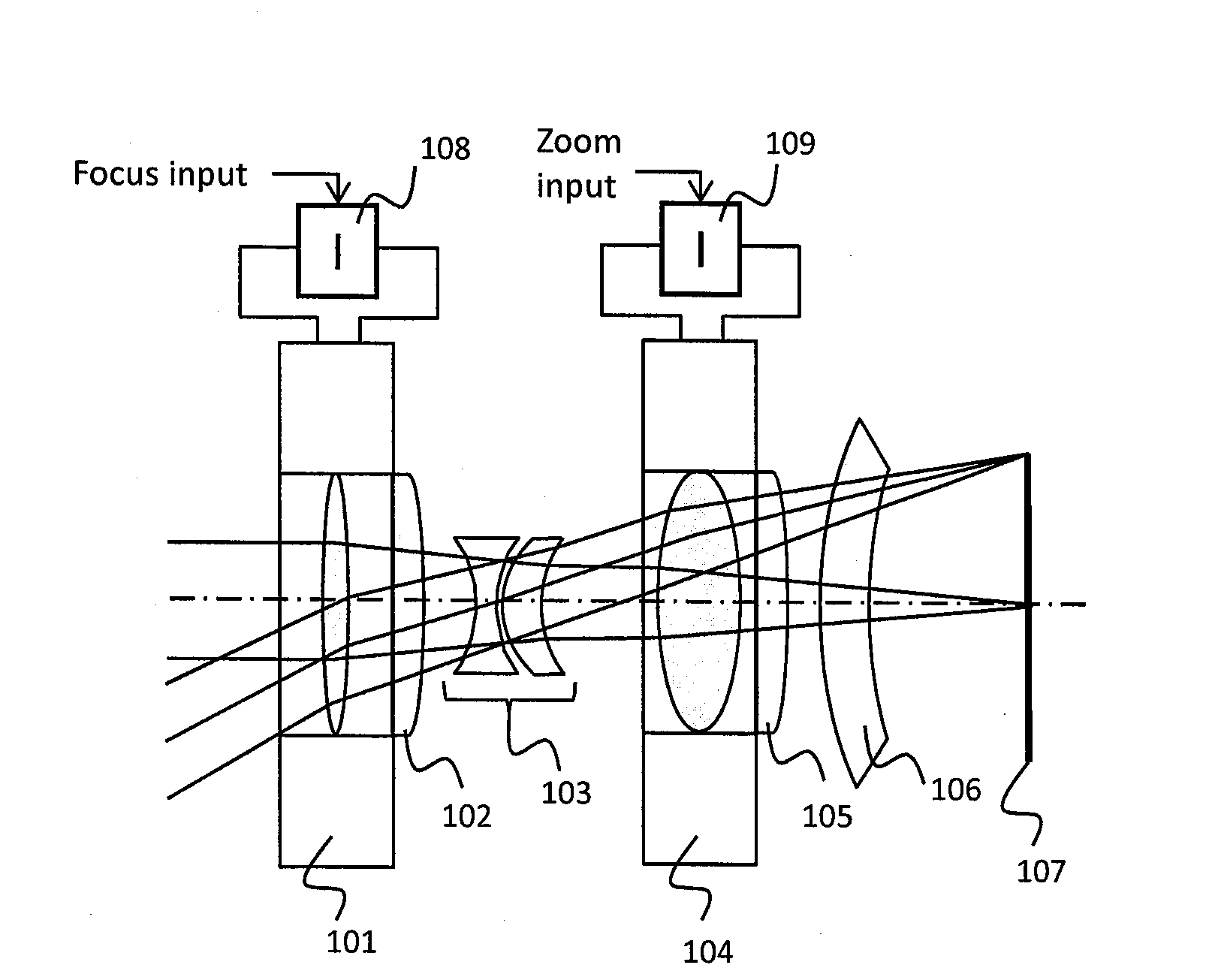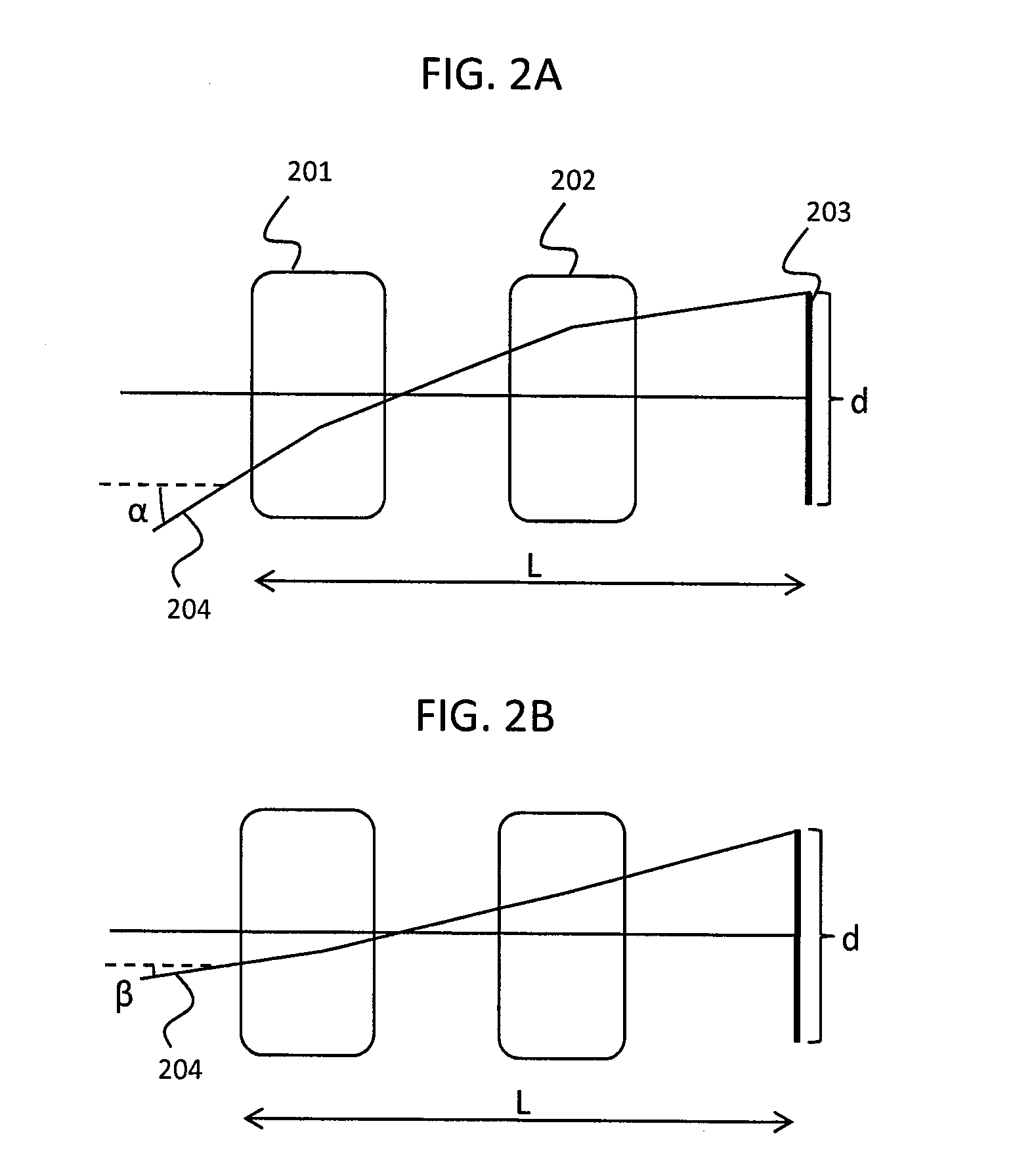Lens Systems And Method
a technology of lenses and lenses, applied in the field of lenses, can solve the problems of affecting the use of lenses other devices where space is at a premium, and the potential for miniaturization of such lenses for use in cell phones, medical endoscopes, etc., and achieves the effect of improving the use efficiency and reducing the cost of lens components
- Summary
- Abstract
- Description
- Claims
- Application Information
AI Technical Summary
Benefits of technology
Problems solved by technology
Method used
Image
Examples
Embodiment Construction
[0019]Zoom lenses are provided with deformable lenses that overcome the disadvantages of both conventional zoom lenses and previous approaches that utilized deformable lenses. The deformable lenses provided herein are, to give a few examples, tuned at least in part by an element such as an electrostatic actuator, an electromagnetic actuator, a piezo motor, a magneto-strictive actuator, a stepper motor, or an electroactive polymer actuator offering a high focus tuning range. Additionally, the zoom lenses presented herein utilize varifocal operating principles instead of the afocal / parfocal principles. In one example of the present approaches, a single focus tunable lens is used as a single autofocus element.
[0020]In many of these embodiments, a compact zoom lens includes a first deformable lens that is constructed of a membrane with a deformable portion and a filler material. In these approaches, deformation is achieved at least in part by an element such as an electrostatic actuator...
PUM
 Login to View More
Login to View More Abstract
Description
Claims
Application Information
 Login to View More
Login to View More - R&D
- Intellectual Property
- Life Sciences
- Materials
- Tech Scout
- Unparalleled Data Quality
- Higher Quality Content
- 60% Fewer Hallucinations
Browse by: Latest US Patents, China's latest patents, Technical Efficacy Thesaurus, Application Domain, Technology Topic, Popular Technical Reports.
© 2025 PatSnap. All rights reserved.Legal|Privacy policy|Modern Slavery Act Transparency Statement|Sitemap|About US| Contact US: help@patsnap.com



